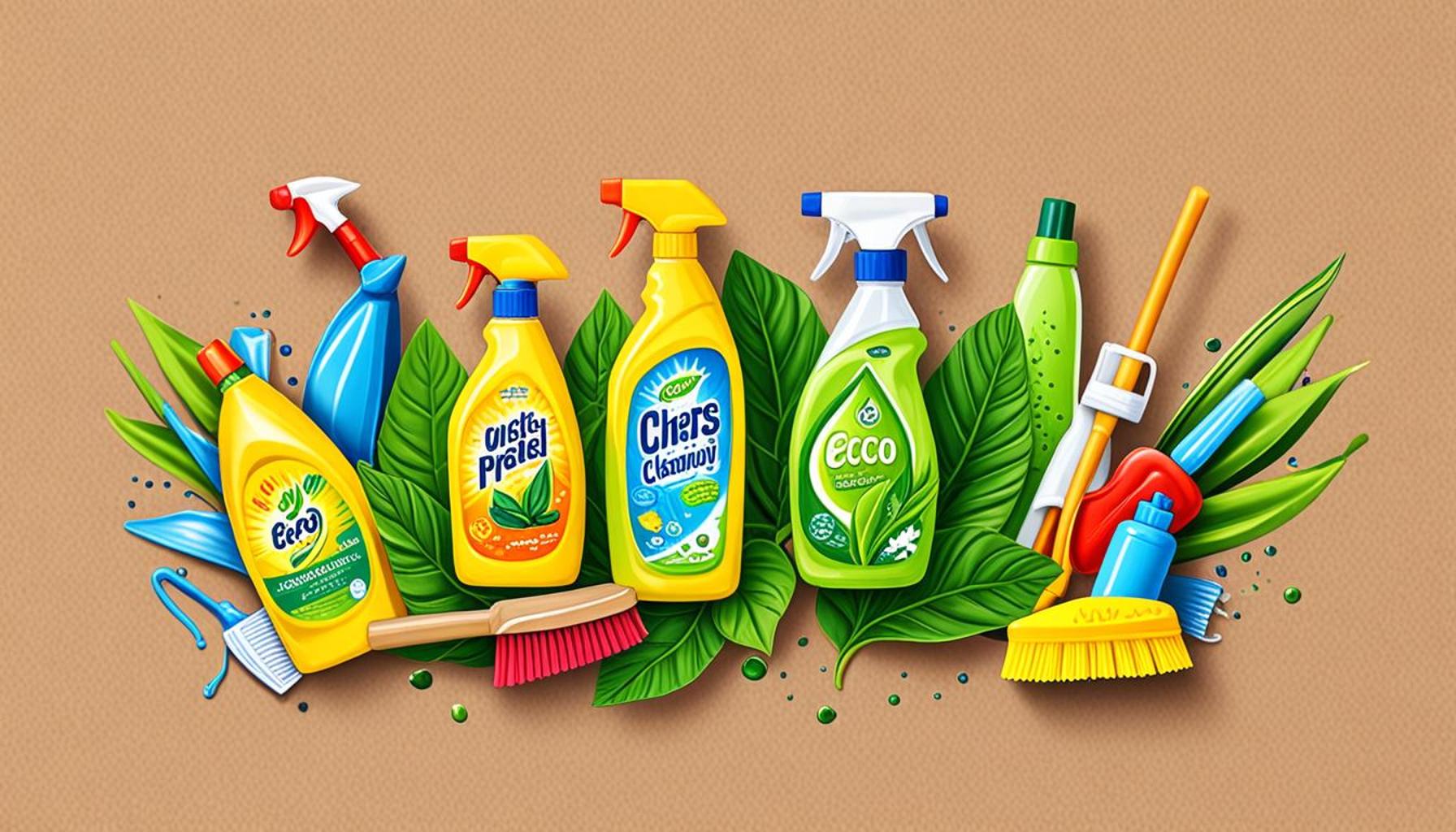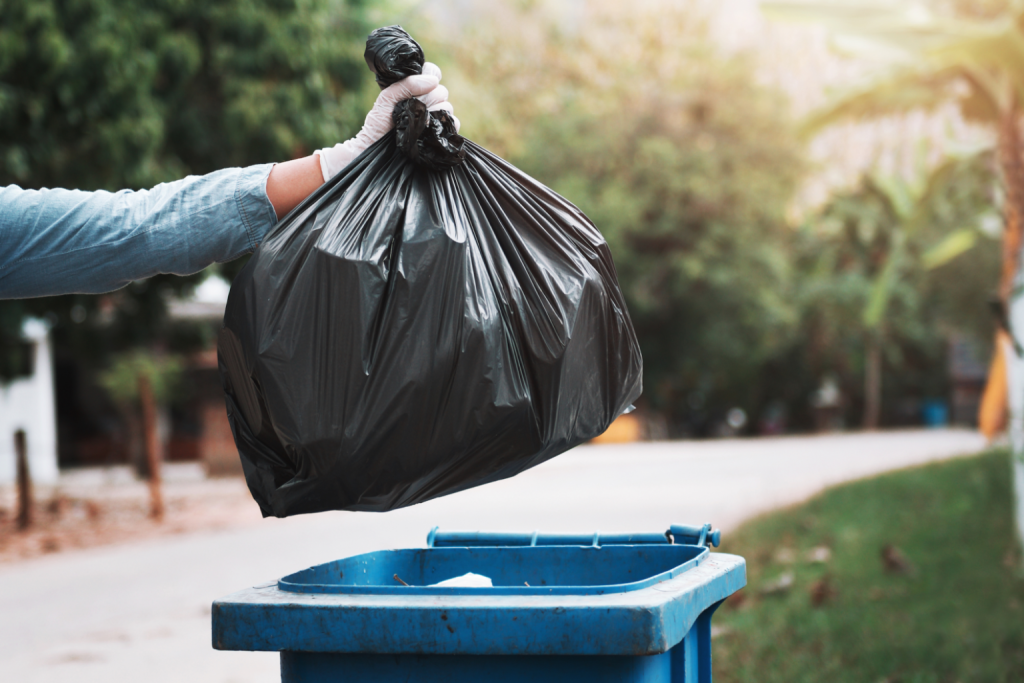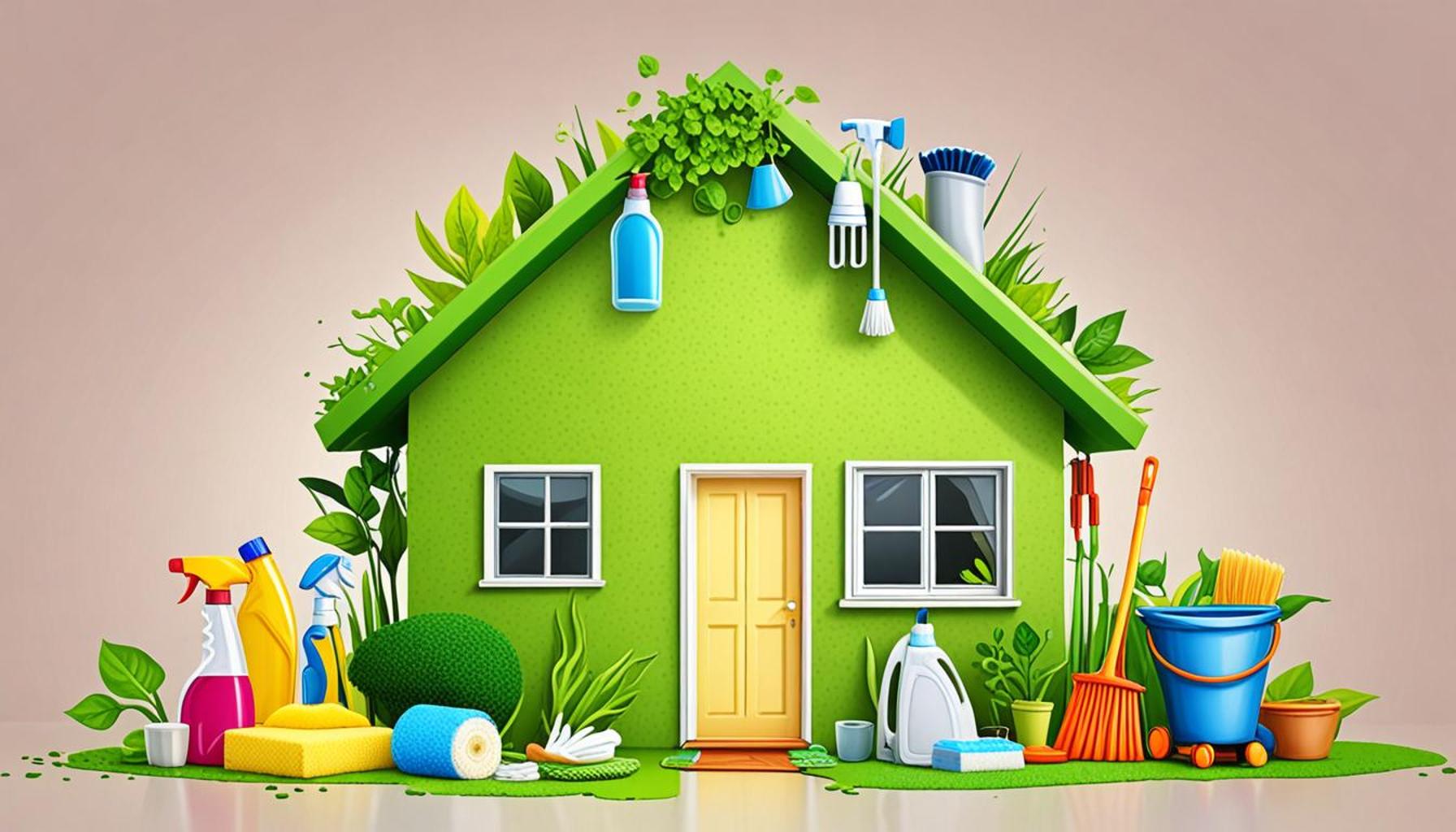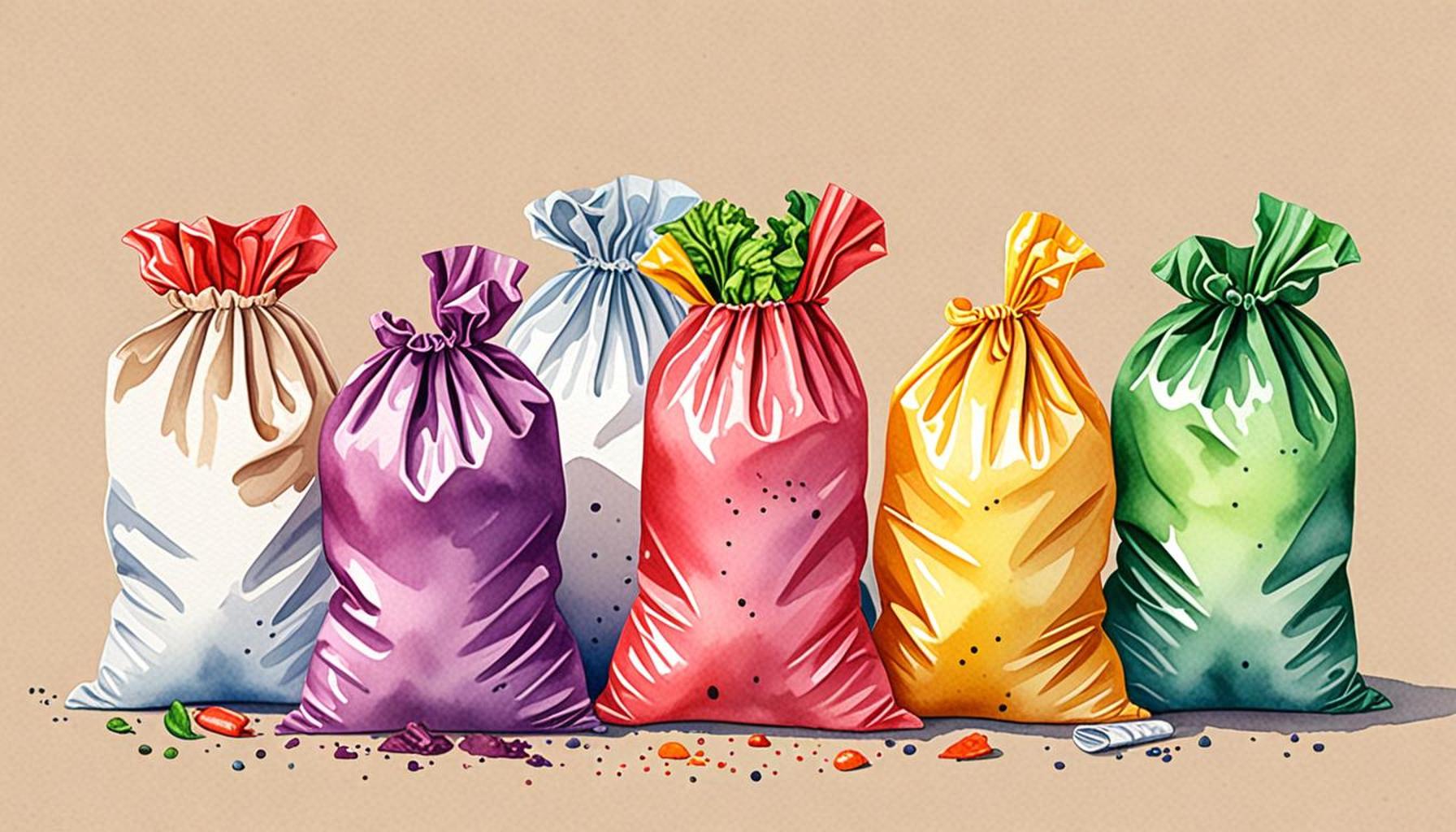Eco-Friendly vs Traditional Cleaning Brands A Comprehensive Comparison

Understanding the Cleaning Product Landscape
As we move further into an era that prioritizes sustainability, the cleaning products we select can significantly affect not only our indoor environments but also the wider ecosystem. Consumers today are navigating a complex array of choices, often torn between eco-friendly and traditional cleaning brands. This article aims to clarify the key differences and similarities between these two essential categories, aiding consumers in making informed decisions.
When considering which cleaners to use, it’s crucial to examine some key factors:
- Ingredients: Eco-friendly brands prioritize natural, biodegradable ingredients like vinegar, baking soda, and essential oils. In contrast, traditional cleaners often rely on synthetic chemicals, which can include harsh toxins such as ammonia, phosphates, and artificial fragrances. For example, while a vinegar solution can effectively cut grease and deodorize surfaces, many conventional cleaners use strong chemicals that may leave behind harmful residues.
- Effectiveness: One of the contentious topics in choosing cleaning products revolves around their efficacy. Some users argue that eco-friendly products do not perform as well as traditional counterparts, especially for deep cleaning tasks. Products like all-purpose eco-cleaners may fall short against formidable stains when compared to potent bleach-based cleaners. However, various studies suggest that eco-friendly alternatives can be just as effective if users follow guidelines for appropriate use.
- Environmental Impact: Eco-friendly cleaners are often produced with sustainability in mind. They typically employ environmentally safe manufacturing processes and packaging, contributing to a reduced carbon footprint. On the other hand, traditional brands can contribute to pollution and waste, both through the production process and the chemicals that enter waterways post-use. Transitioning to eco-friendly products can be a small but significant step in reducing one’s ecological footprint.
Given the expanding market for cleaning solutions, ponder these essential queries:
- What are the long-term implications of your cleaning product choices on health and the environment?
- How do your personal preferences, such as scent or brand loyalty, influence your purchasing decisions?
- Are eco-friendly products genuinely safer and more effective, or is there more to the story?
This exploration will provide a well-rounded understanding of the complexities associated with both eco-friendly and traditional cleaning brands. Join us as we dive deeper into the realm of cleaning products, highlighting unique findings and encouraging a more informed perspective on everyday choices that matter for both health and the planet.
CHECK OUT: Click here to explore more

Ingredients: The Foundation of Cleaning Products
When distinguishing between eco-friendly and traditional cleaning brands, one major point of contention is the ingredients used in these products. Eco-friendly brands emphasize a cleaner, greener approach. Their formulations often include biodegradable components derived from natural sources—common examples are vinegar, baking soda, and essential oils. These natural ingredients not only tend to be less harmful but can also break down safely in the environment. For instance, vinegar is prized for its capability to dissolve mineral deposits, cut through grease, and leave surfaces gleaming without the need for toxic additives.
On the flip side, traditional cleaning products frequently rely on synthetic chemicals. These may include potent agents such as ammonia, phosphates, and bleach, known for their powerful cleaning capabilities. While these harsh chemicals can be incredibly effective for tough cleaning tasks, they come with a caveat: residual toxicity. Many conventional cleaners leave behind harmful substances that can off-gas into your home, potentially affecting indoor air quality. For instance, studies have found that regular use of ammonia-based cleaners can lead to respiratory issues and other health concerns.
Effectiveness: Perception vs. Reality
The effectiveness of cleaning products remains a polarizing debate. Skeptics of eco-friendly products often argue that their natural formulations lack the aggressive power found in traditional cleaners. This perception may stem from personal anecdotes or marketing that equates strength with the use of harsh chemicals. However, it’s essential to examine the facts realistically. Numerous studies indicate that eco-friendly alternatives can hold their own in cleaning performance if used correctly. For example, while all-purpose eco-cleaners may not obliterate a tough stain instantly, they can be effective with the right technique, such as allowing them to sit for a brief period or combining them with muscle work during scrubbing.
Interestingly, consumer feedback also highlights that some individuals prefer eco-friendly brands for their overall safety and peace of mind. Anecdotal evidence suggests a growing satisfaction among users who have transitioned to greener products, noting not only cleanliness but an improvement in air quality and reduced allergic reactions. As the cleaning product market evolves, many brands are now formulating products designed to outperform traditional cleaners, dispelling the myth that green equals ineffective.
Environmental Impact: The Bigger Picture
Another compelling area for consideration is the environmental impact of cleaning products. Eco-friendly brands often take a sustainable approach at every stage of production—from sourcing natural ingredients to utilizing biodegradable packaging. This attention to sustainability contributes to a significantly lower carbon footprint, allowing consumers to play a part in protecting the planet.
Traditional cleaning brands, however, may not share the same commitment to environmental responsibility. The chemical compounds used can result in pollution, both during production and after disposal. As residues enter waterways from household cleaning products, they contribute to ecological degradation, prompting a growing number of consumers to rethink their choices. Understanding the broader environmental implications of our cleaning product selections can be a persuasive motivator in shifting toward eco-friendly brands.
In summary, the choice between eco-friendly and traditional cleaning brands involves nuanced considerations regarding ingredients, effectiveness, and environmental impact. As consumers grow more informed, understanding these distinctions helps pave the way towards making healthier choices for both home and Earth.
| Category | Advantages |
|---|---|
| Eco-Friendly Cleaning Brands | Utilize biodegradable ingredients, ensuring less environmental harm. |
| Traditional Cleaning Brands | Offer strong cleaning power, often more effective in tough, commercial-grade stains. |
| Health and Safety | Eco-friendly brands generally reduce allergic reactions with fewer harsh chemicals. |
| Cost-effectiveness | Traditional brands often provide a lower cost per use, appealing to budget-conscious consumers. |
In the ongoing dialogue surrounding cleaning products, a key consideration is the impact these products have on both health and the environment. Eco-friendly cleaning brands have become increasingly popular among consumers seeking safer options for household cleaning. These products generally avoid volatile organic compounds (VOCs) and synthetic fragrances, translating to improved air quality in the home. Conversely, traditional cleaning brands often tout their ability to tackle stubborn stains and grime, frequently backed by research and a proven track record. Moreover, while eco-friendly products can often symbolize a higher price point, many consumers are attracted to the long-term health benefits they provide, leading to potential savings in healthcare costs related to exposure to harmful chemicals. Traditional brands may provide advanced cleaning solutions, yet the burgeoning awareness surrounding eco-conscious products continues to shift consumer preferences, encouraging individuals to become more discerning about the environmental implications of their cleaning choices.
SEE ALSO: Click here to read another article
Cost Considerations: The Price of Cleanliness
When evaluating eco-friendly versus traditional cleaning brands, a crucial factor that often dictates consumer choice is the cost. Eco-friendly products can sometimes carry a higher price tag, leading many to question whether the premium is justified. Factors contributing to the increased cost may include sustainably sourced ingredients, eco-certifications, and lower production volumes stemming from a niche market.
However, it’s imperative to assess the long-term value of eco-friendly cleaning products. Many of these brands offer concentrated formulations, meaning consumers may use less product per cleaning session, ultimately stretching their dollar further. Additionally, the reduction of respiratory and skin irritations through less toxic ingredients can lead to fewer health-related expenses — something often overlooked in the initial purchase price.
In contrast, traditional cleaning brands usually appeal to budget-conscious shoppers with their widespread availability and lower upfront costs. While these products can seem economically friendly at first glance, the hidden expenses related to potential health issues and environmental cleanup can paint a different financial picture in the long run. For instance, the costs associated with healthcare due to exposure to harmful chemicals can escalate rapidly, effectively counteracting any savings garnered from lower-priced traditional products.
Consumer Awareness and Education: The Driving Force
As consumers become more aware of the implications of their cleaning choices, education plays an integral role in shaping purchasing behavior. The rise of social media, blogs, and eco-focused websites has facilitated the spread of information about the advantages of eco-friendly products and the environmental risks posed by traditional cleaners. Campaigns promoting transparency in ingredient sourcing have also gained traction, encouraging brands to disclose their formulations.
The government and non-profit organizations are now stepping in to bolster consumer education. Programs and guidelines advocate for informed purchases and safe cleaning practices while also raising awareness of contaminants present in conventional cleaning agents. For instance, the Environmental Protection Agency (EPA) has initiatives that classify and promote products that meet stringent safety and environmental standards, further assisting consumers in making safer choices.
Certification and Standards: The Path to Trust
Navigating the shopping aisles can be daunting for consumers trying to identify trusted products in the sprawling market of cleaning supplies. Hence, certifications serve as a beacon of trust. Eco-friendly brands often seek certifications such as Green Seal or the EPA’s Safer Choice label, which signal adherence to standards for both safety and environmental impact. These certifications reassure consumers that a product has been scrutinized and meets specific criteria for environmental responsibility.
Traditional brands, on the other hand, may not always pursue such certifications, raising questions regarding the safety and impact of their formulations. Although a product might claim to be “natural” or “eco-conscious,” without transparent verification, consumers are left to discern the genuineness of these claims. Ultimately, this can lead to a sense of skepticism among buyers, who may find themselves looking closer at the labels before making a final decision.
As the cleaning product landscape continues to evolve, discussions surrounding cost, consumer awareness, and trust are paramount in guiding individuals toward informed choices. It is these conversations that will shape the future of cleaning, helping to redefine what clean truly means in an increasingly conscientious society.
SEE ALSO: Click here to read another article
Conclusion: The Future of Clean Choices
In weighing eco-friendly versus traditional cleaning brands, it’s clear that the choice extends beyond mere cost considerations to encompass health, environmental impact, and consumer education. As we move toward a more environmentally conscious society, the demand for transparent practices and responsible sourcing is rising. Eco-friendly products, while often priced higher upfront, can provide long-term savings through concentrated formulations and reduced health risks. Meanwhile, traditional cleaners, which entice consumers with lower prices, may conceal hidden costs associated with their harmful effects.
Moreover, consumer awareness has evolved dramatically, driven by social media, advocacy groups, and government initiatives. This transformation fosters a more informed shopper who understands the nuances of cleaning products, recognizing the importance of certifications like Green Seal and Safer Choice as markers of trust. The conversation around safety and transparency is more critical than ever as brands adjust to meet the evolving expectations of their customer base.
Ultimately, the choice of cleaning products can no longer be viewed through a simplistic lens of cost versus effectiveness. Instead, each consumer must consider the holistic implications of their decision—from personal health to planetary well-being. By prioritizing eco-friendly solutions over traditional methods, individuals can contribute to a sustainable future while still achieving a clean and safe living environment. As we enter a new era of conscious consumerism, embracing these complexities will pave the way for a healthier home and planet.



